YANGON—Mahagandhayon monastery in Mandalay Region is one of Myanmar’s most prominent monastic colleges. Well known for its adherence to the Buddhist monastic codes, every year it attracts thousands of tourists eager to glimpse the peaceful monastic life of the more than 1,500 monks who reside and study Buddhist teachings there.
For visiting tourists, the monastery’s main attraction is the sight of hundreds of barefoot, downcast monks silently lining up to accept late morning meals offered by donors. Witnessing the ritual imparts a sense of tranquility and is a deeply moving experience for many onlookers. Mahagandhayon is also famous for its strict religious discipline.
But the monastery’s tranquility was shattered one morning in early January this year when a group of visiting Chinese tourists quarreled loudly as they competed for the best place to take pictures of the monks. The argument sparked an uproar at the monastery, and tourist guides had to lead the tourists out of the compound.
The Chinese tourists’ behavior forced the monastery to post instructions in Chinese on its walls, telling visitors not to enter prohibited places like dining halls, not to drink alcohol and not to engage in arguments inside the monastery compound.
“Most [foreign] tourists follow the rules on how they should behave while they are observing the peaceful monastery life here. But the Chinese do not,” U Nyein Kyaw Kyaw Win, a member of the Mandalay Tourist Guide Association’s executive committee, told The Irrawaddy.
The tour guide, who caters to Chinese travelers, complained that most of his clients rarely follow the rules, such as taking off their shoes at pagodas. “We warn women not to wear shorts when visiting religious sites, but they ignore us,” he said.
Myanmar society still mostly adheres to well-established dress codes, particularly regarding skirt length for women. In religious buildings, the knees and shoulders should be covered, and it is customary to remove one’s shoes.
“It’s so annoying,” U Nyein Kyaw Kyaw Win added, referring to the offensive behavior he’s observed by many Chinese travelers.
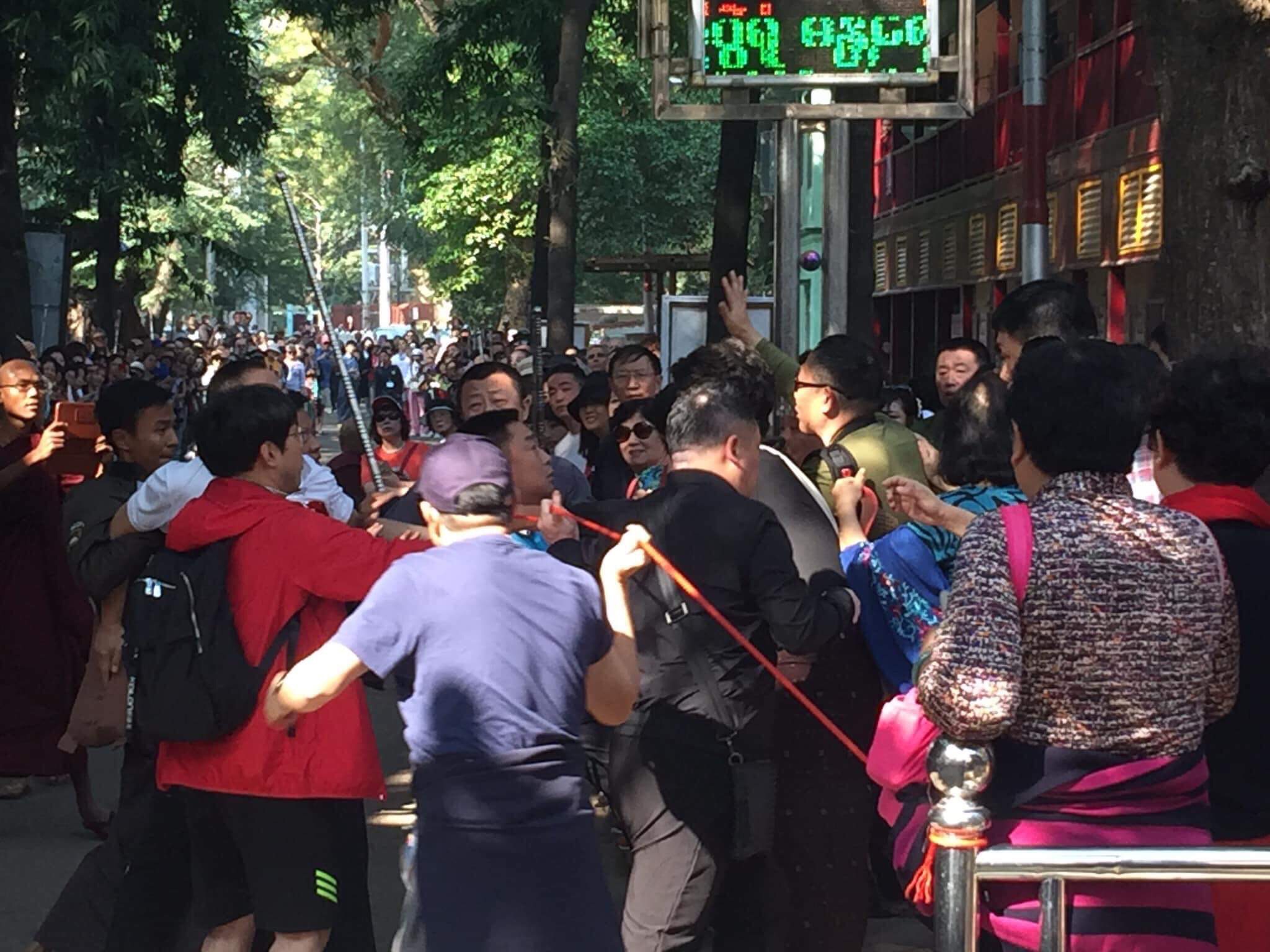
Looking East
From scalding a flight attendant with hot water to drying underwear in an airport lounge, tourists from mainland China have frequently made international headlines in recent years due to inappropriate behavior, as the country’s increasingly affluent middle class gets the travel bug.
With snow-capped mountains in the north, the World Heritage-listed ancient city of Bagan in the central plain, and white-sand beaches in its deep south, Myanmar has been on international tourists’ maps since it started opening to the world in 2012.
However, the Southeast Asian country didn’t have much firsthand experience with rowdy Chinese tourists until last year, when the government adopted a “Look East” policy in an effort to revive a moribund economy—including the tourism sector—that was hit hard after the country’s image was globally tarnished by the Rohingya crisis in 2017. The international community accused the country’s military of human rights violations against the Rohingya and criticized the government over its silence on the issue. As a result, many Western tourists have boycotted Myanmar since then; as of August this year, the number of visitors from the West had declined by 40 percent since the Rohingya crisis erupted.
In a bid to increase the number of tourists from Asia, Myanmar announced that effective last October through September 2020, visitors from Hong Kong and Macau would qualify for visa exemptions, while those from mainland China would qualify for visas on arrival. Since then, the number of mainland Chinese visitors to Myanmar has increased significantly. From January to August this year, the number was 457,069—more than double the figure for the same period last year—according to the Ministry of Hotels and Tourism (MOHT), making Chinese tourists the top foreign travelers to Myanmar this year, followed by Thais with 176,150 visitors.
Lack of respect
When Chinese tourists started flooding into local tourist sites last year, many Myanmar people embraced them as the saviors of the country’s dying tourism sector, with Western travelers staying away from the country.
But that hope didn’t last long.
As the number of mainland Chinese tourists rapidly increased, they gained a reputation for behaving poorly at tourism sites. Mandalay and Bagan, the most popular sites among Chinese, suffered the most.
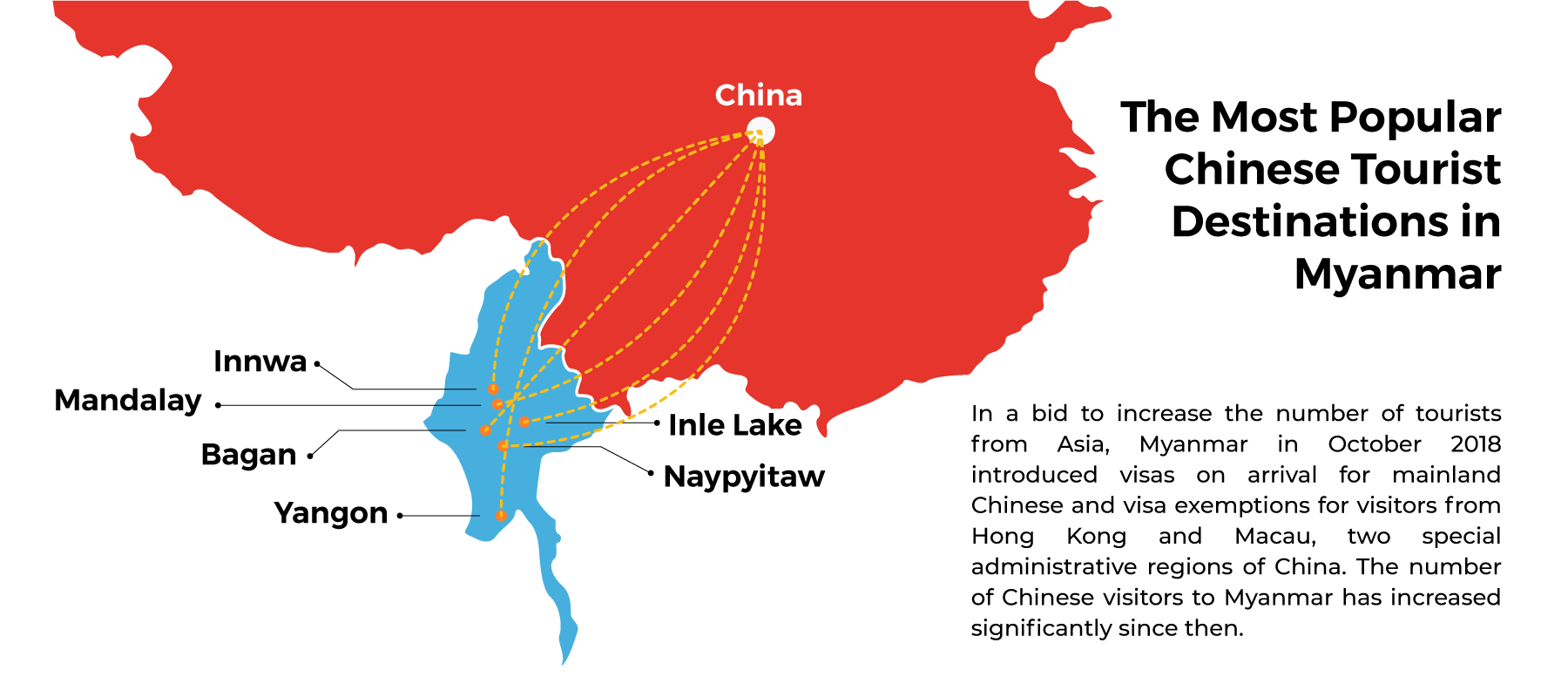
Local residents reported being upset by the frequency with which Chinese visitors broke the rules, especially in religious places. The most common violations were taking photos in restricted areas, trespassing in places where visitors are not allowed to enter, and refusing to remove their shoes inside monasteries.
Industry workers also complain of such behaviors as littering, wearing inappropriate clothes, customers washing their feet in restaurants’ bathroom sinks, speaking loudly and spitting.
In the ancient city of Bagan, a UNESCO World Heritage Site, local people have complained that Chinese tourists litter monument sites with discarded water bottles. Local restaurant staff say they frequently argue with Chinese visitors for taking large amounts of food from buffet counters and leaving it uneaten on their tables, and breaking products in souvenir shops.
“It’s annoying to have to deal with these problems every day. They are so boorish,” said Daw Kyi Thar Khin, the owner of the Yamin Shwe Sin antique shop in Bagan.
“They discard water bottles near the pagodas. When I tell them not to do it, they laugh at me and say it’s not my business,” she said.
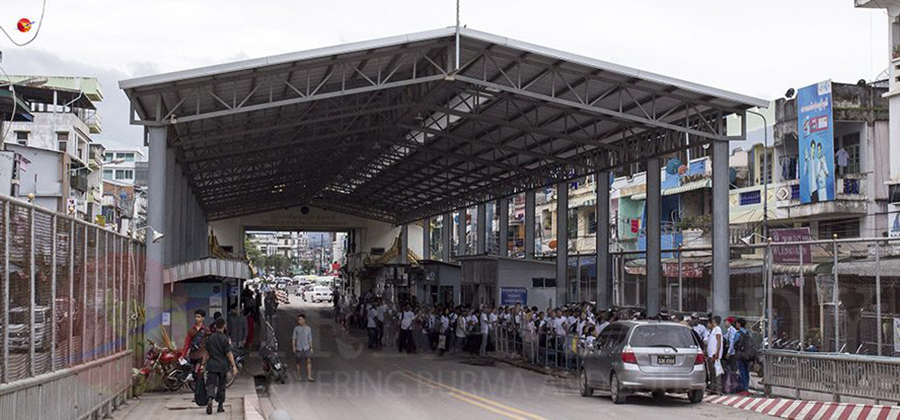
Another sore spot among local people is Chinese visitors’ tendency to point at items displayed on the ground with their feet. In Myanmar culture, touching or pointing with the feet is considered rude, as the feet, the lowermost parts of the body, are considered unclean.
“They ask the price using their feet,” said Daw Win Win, who sells T-shirts and local products near the U Being Bridge, a century-old wooden bridge and a popular tourist site in Mandalay.
“Why can’t they just behave properly?” she said.
To prevent such problems, some guides working with Chinese tourists equip themselves with megaphones and use them to play recorded warnings not to break traditional rules at pagodas and historic sites. However, more often than not the warnings fall on deaf ears, they say.
“Sometimes it’s hopeless, because the recorded message can’t be heard over their shouting,” said U Nyein Kyaw Kyaw Win, the Mandalay tour guide.
Prior to become a tour guide for Chinese tourists, U Nyein Kyaw Kyaw Win worked as an English-speaking guide for Western visitors from 2015 to 2018. He recalled that most of his previous clients were polite, willing to adapt to Myanmar culture and respectful of the traditions here.
“They also know how to behave at religious sites. I didn’t even have to remind them,” U Nyein Kyaw Kyaw Win said.
The president of the Mandalay Tourist Guide Association, U Win Zaw Oo, told The Irrawaddy that guides are dealing with culture shock every day.
“They wash their feet in the sinks at restaurants. That is totally unacceptable in our culture,” he said.
In response to the Chinese tourists’ behavior, some restaurants have put up signs in Chinese prohibiting customers from washing their feet.
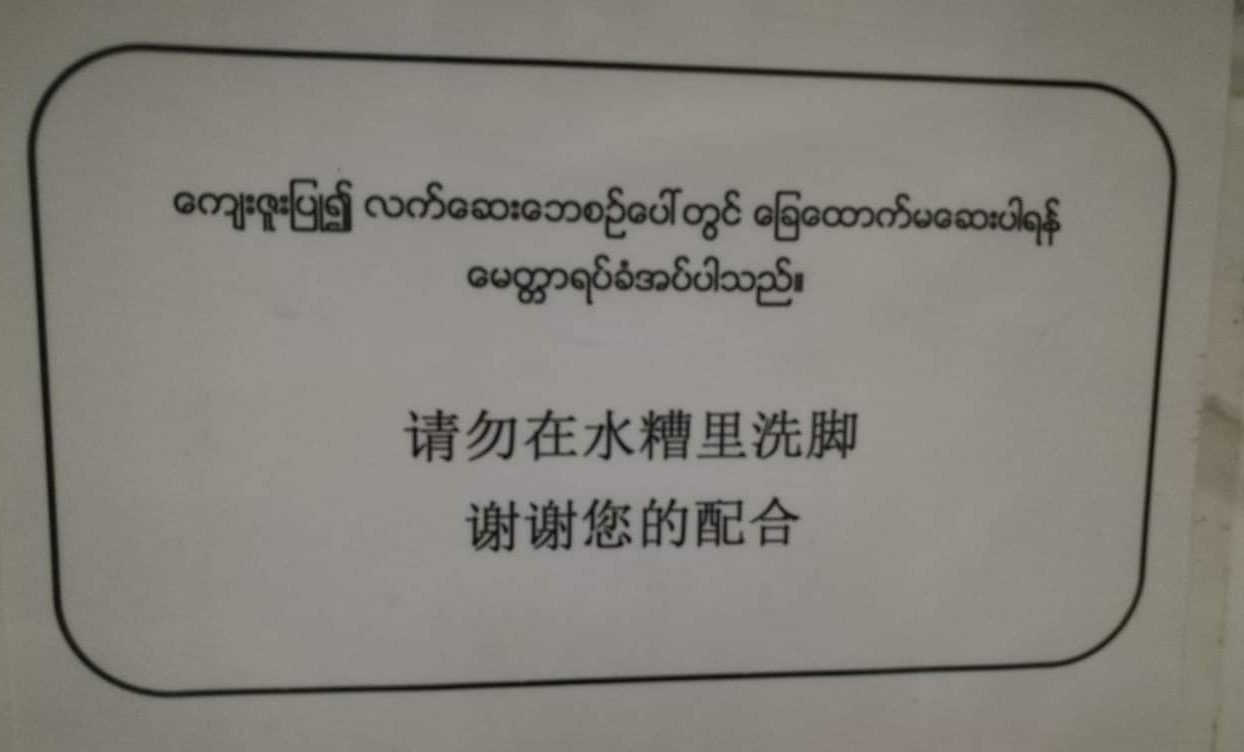
To try and keep Chinese tourists from causing offense overseas, the China National Tourism Administration (CNTA) in 2013 published a 64-page illustrated guidebook on “Civilized Tourism” to educate the traveling public about the need to respect social norms when abroad. The book offers advice on topics from queue jumping to toilet use.
In response to the international criticism, Chinese authorities have also published a set of guidelines for citizens to follow when traveling overseas, which state: “Tourists shall observe public order and respect social morality in tourism activities, respect local customs, cultural traditions and religious beliefs, care for tourism resources, protect the ecological environment, and abide by the norms of civilized tourist behavior.” Even President Xi Jinping weighed in, urging his citizens to behave overseas.
Judging from the views of many working in Myanmar’s tourism sector, however, the effort seems to have been largely fruitless.
Frustrations among local people boiled over in the second week of September when some mainland Chinese tourists stole jade stones from the Kyauksein (Jade) Pagoda on the outskirts of Amarapura in Mandalay Region. Covered in over 10,000 tonnes of jade, rising to a height of 75 feet, 6 inches and considered the world’s first jade pagoda, Kyauksein Pagoda is a favorite destination among Chinese tourists in Myanmar. Around 3,000 to 4,000 Chinese visit every day, according to the MOHT.
The news went viral on social media in Myanmar, with most commenters demanding the government take serious action to prevent such behavior.
The pagoda’s trust told the media that it was not the first time Chinese visitors had been caught trying to steal stones from the site. Chinese tourists had been caught twice by the pagoda trust trying to ply decorated jade stones from the walls. The trust warned the tour company and tour guides that brought the Chinese visitors that they would face legal action if it happened again.
Writer Su Nget, a well-known native of Mandalay, told The Irrawaddy that incidents such as the one at the Jade Pagoda could fuel tensions between local residents and Chinese tourists.
He said, “We value our history, culture and ancient architecture. But they [the Chinese visitors] fail to respect them. It is a major difference between us. If these cases keep happening, it could lead to instability in Mandalay.”
He said, “If there is a brawl between Chinese and local residents, it won’t be easy to resolve. We could face something like what happened in Myawaddy.”
In Myawaddy, a town on the Thai border in Karen State, a brawl erupted last week between a group of local residents and seven Chinese people who urinated in front of a phone shop owned by a local person. The locals filed a complaint against five of the Chinese; two others fled the scene.
The town has seen a surge in the number of Chinese immigrants over the past year, since the local Border Guard Force (BGF) started implementing a city expansion project in partnership with a Chinese firm. Local residents held a meeting and called on the government to crack down on illegal Chinese immigration, warning that they would stage a protest if the government failed to take action.
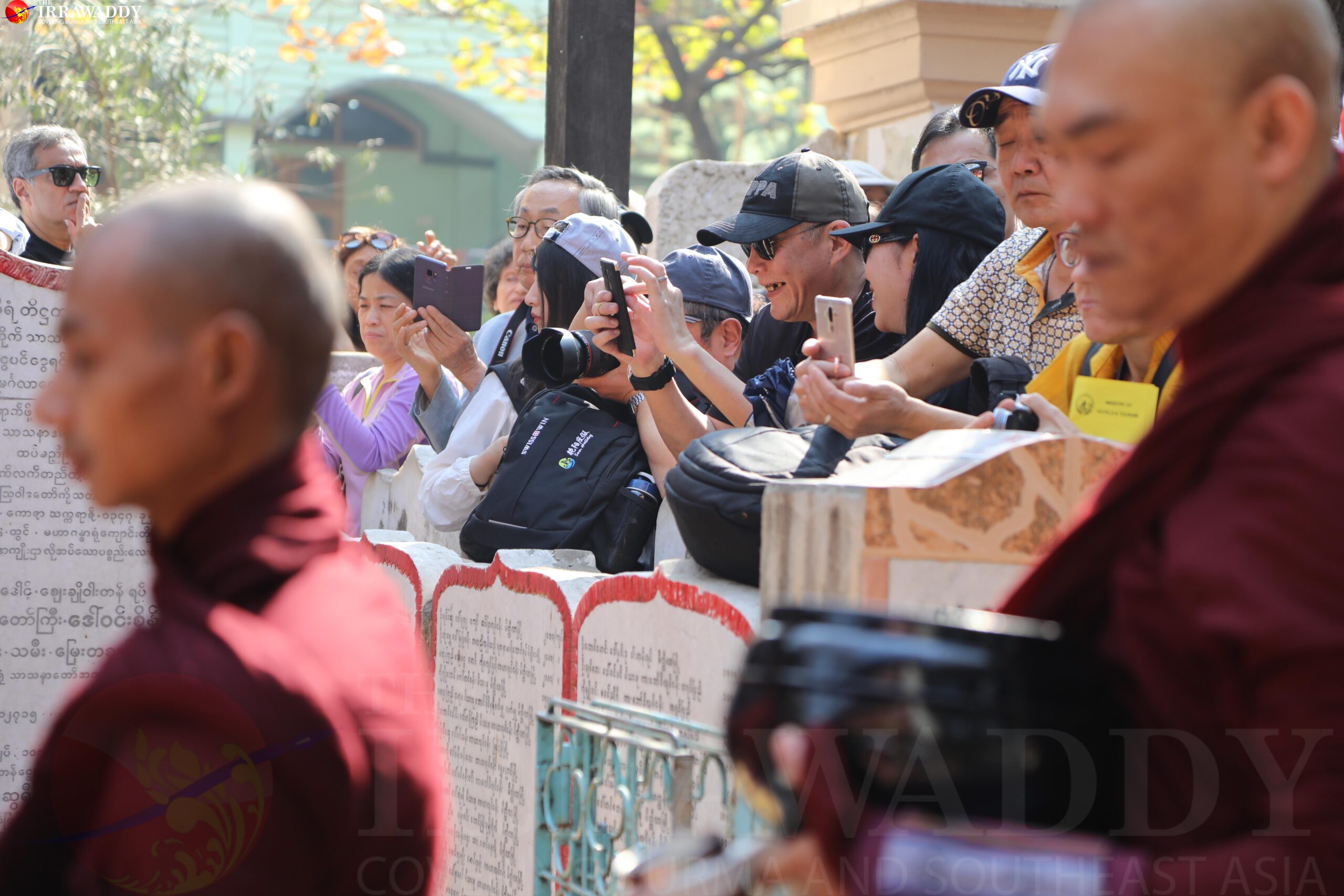
Zero-dollar tourism
Apart from the reports of rowdiness, many locals complain that Chinese tourists also bring a “zero-dollar” tourism culture. The practice has been banned in many countries in the region on the grounds that neither the government nor local communities benefit from it.
Under these plans, Chinese tourists buy cheap tour packages from companies that are registered in Myanmar but owned by Chinese nationals with little or no involvement from local tour operators and businesses. The packages involve tightly planned itineraries based around hotels, restaurants and retail shops connected to the Chinese tour operators.
The agencies do not hire local Chinese-speaking tour guides. Instead, the tourists are guided by Chinese nationals. Moreover, when making purchases, they use Chinese-based payment services like Alipay or WeChat Pay instead of local payment methods, further depriving Myanmar of revenue. Often, the travelers are forced to buy from shops that are linked to the tour agencies, which are paid commissions by the shops, industry sources say.
Recently, the government formed a special committee comprising officials from regional and state governments to take action against zero-dollar tours. Many companies involved in the trade received warnings from the committee.
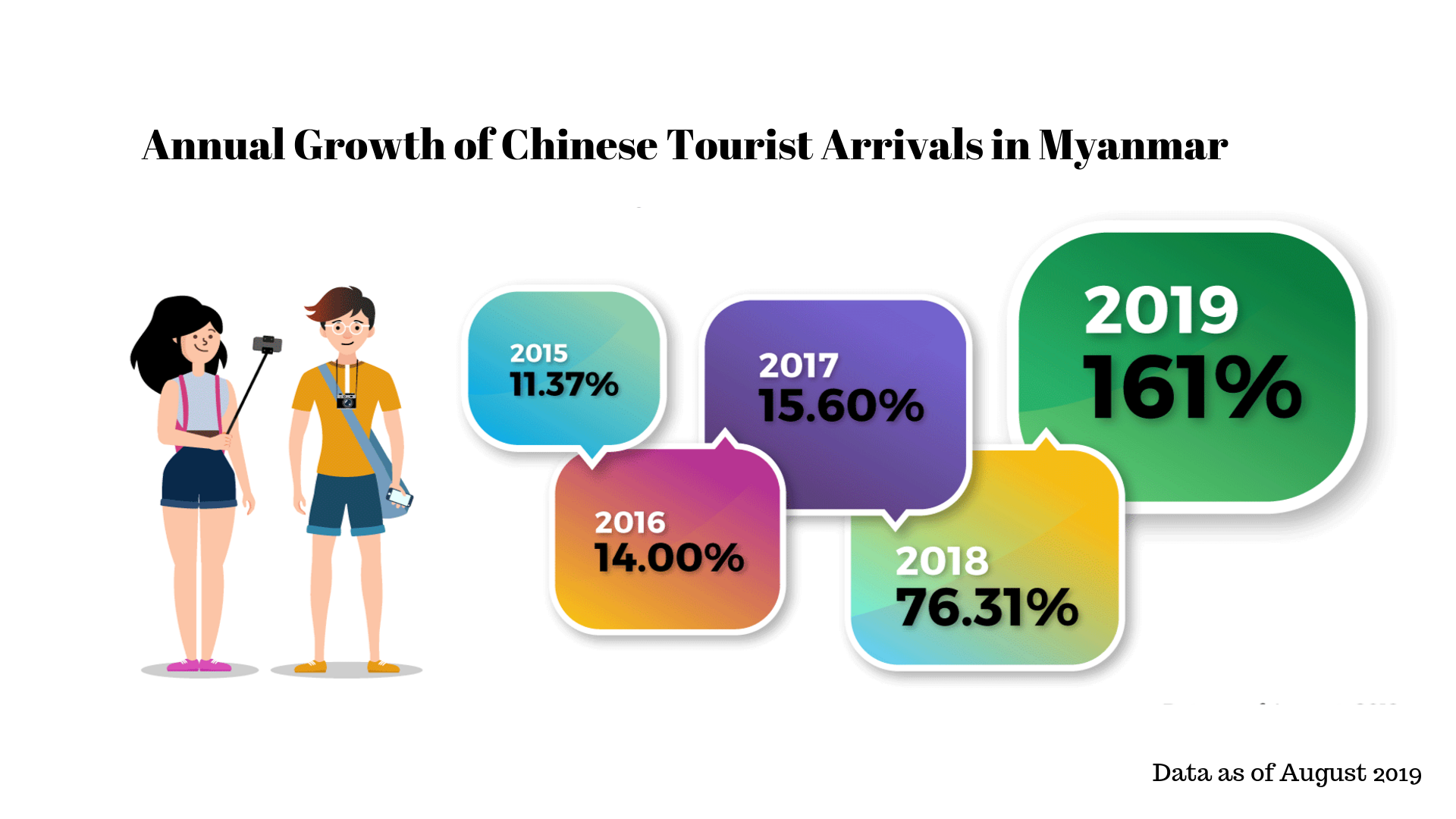
Unprepared for influx
Many residents of the communities that are bearing the brunt of the impact of the influx of Chinese tourists blame the Look East policy, which they say sought to attract tourists from East Asia without
first laying down any rules and regulations.
U Win Zaw Oo, the president of the Mandalay Tourist Guide Association, said the government made a big mistake by opening the door to Chinese tourists without making the proper preparations.
“It is totally different from what we expected for the tourism sector. What we want to see here is cultural tourism,” he said.
U Win Min of the Myanmar Center for Responsible Business (MCRB) told The Irrawaddy that what Myanmar needs is responsible tourism that aims to minimize the negative social, economic and environmental impacts while generating greater economic benefit for local people and enhancing the well-being of host communities.
The senior program associate (tourism, ICT, regulatory) said Myanmar tourism officials need to think about whether they have made sufficient preparations for the tourists from the East, such as pre-negotiations with their counterparts in those countries explaining to them Myanmar’s values, culture and sensitive issues.
“Even if we don’t get a lot of benefits from the tourists, they need to respect our traditions and culture. I think, based on our experience with Chinese tourists, the government needs to make preparations like installing Chinese-language signboards or notices, such as ‘No smoking’ or ‘Please remove shoes’ signage, at Chinese travelers’ top destinations,” he said.
‘Families to feed’
While they loathe the behavior of some Chinese tourists, many small businesses feel they have no choice but to bear it, as the Chinese are becoming a major income source.

Innwa, another ancient city cum tourist site near Mandalay, used to have around 150 horse-driven carriages to take tourists around the monuments. But the number dropped to 40 when Western tourists turned away following the 2017 Rakhine crisis. However, the number of carriages has risen back up to 120 thanks to the arrival of the Chinese, according to U Maung Thein, a member of the Innwa Horse-Cart Association.
He also complained about the visitors’ manners, including a tendency toward bossiness when communicating with the drivers.
“Although we don’t like their manners, they are giving us money. So we have to bear it,” he said.
For Myanmar’s tourism sector, the reality today is that Chinese tourism is vital as visitor numbers from the West dwindle, said U Win Zaw Oo, the president of the Mandalay Tourist Guide Association.
“We can’t turn them away—local people have families to feed. So, they have to bear it no matter how badly they behave,” he said.
The MOHT acknowledges that Chinese tourists’ behavior is upsetting locals, whose views are clearly made known through social media. However, the ministry still does not have a concrete plan to issue rules and regulations, especially on how to behave in Myanmar, according to its deputy director, U Myint Htwe.
He said the ministry has given full authority to regional ministries and governments to address the issues by applying the law and regulations based on the situations they face.
“We, at the Union level, have no plan in to handle it, meaning to control their behavior. However, whenever we meet with officials from the Chinese tourism sector, we remind them to urge their citizens to follow our rules and regulations, to respect our culture and to behave well when visiting the country,” he said.
Stakeholders in the tourism sector have urged the government to form a committee to manage tourism zones, with the power to imposing specific rules and regulations for tourists to follow—both dos and don’ts. Additionally, they say, such a committee could initiate activities to educate travelers on the need to respect Myanmar’s culture and protect its environment.
“When we open the door, people will come. But it’s important to manage things properly if we don’t want to suffer the consequences,” said U Win Min of the MCRB.
Mandalay-based writer Su Nget warned that Myanmar should be prepared, as the country will only see more and more tourists from China, now that Myanmar is part of China’s Belt and Road Initiative (BRI) and Beijing is encouraging its citizens to visit Myanmar.
Last month, Chinese Ambassador to Myanmar Chen Hai held a meeting with U Ohn Maung, the Union minister for hotels and tourism, to promote Chinese tourism to Myanmar and boost the tourism sector’s cooperation with the BRI.
“That’s why the authorities should impose rules and regulations for the Chinese tourists to follow before the issue becomes even more serious. As we all know, religion is a highly sensitive issue in Myanmar,” Su Nget said.

















